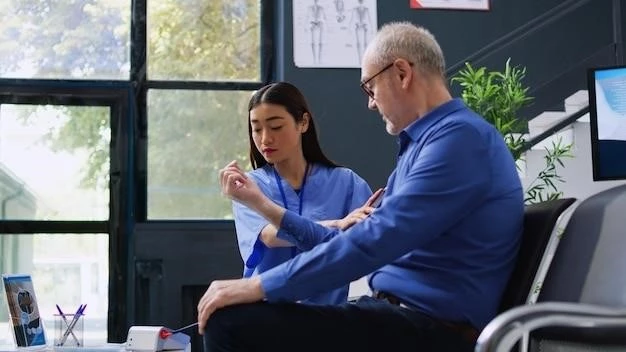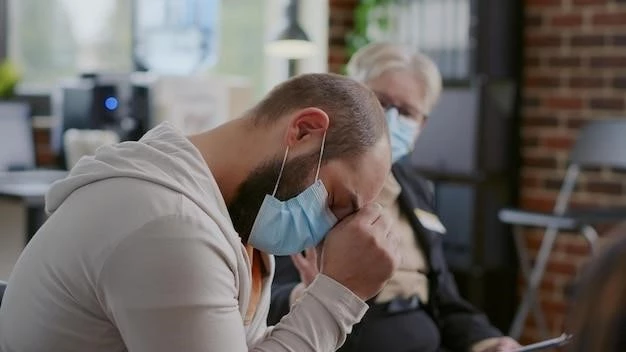Introduction to Parsonage-Turner Syndrome
Parsonage-Turner Syndrome (PTS) was first described in 1948, affecting the shoulder girdle nerves․ Incidence is around two cases per 100,000 people but often under-reported due to diagnosis challenges․
Parsonage-Turner Syndrome (PTS) was first described in 1948 by Parsonage and Turner․ The syndrome presents with sudden shoulder pain followed by muscle weakness․ It is a rare neurological disorder affecting the brachial plexus, with an unknown cause․ Research suggests immune system abnormalities may play a role․ Recent studies highlight potential hereditary forms of PTS and the importance of multidisciplinary teams in managing the syndrome․
Description of the syndrome and its historical background
Parsonage-Turner Syndrome, first reported in 1948, involves sudden shoulder pain and subsequent muscle weakness․ Historically known as brachial neuritis or neuralgic amyotrophy, it remains a neurological mystery, with causes including potential autoimmune factors․
Symptoms and manifestations of the syndrome
Parsonage-Turner Syndrome (PTS) commonly presents with sudden and intense pain in the shoulder region that lasts for a period of time, followed by muscle weakness․ This condition may cause Kiloh-Nevin syndrome, affecting hand movements․ PTS can lead to lasting damage to nerves, muscles, and ligaments, with potential complications arising from this neurological disorder․
Different names and synonyms used for Parsonage-Turner Syndrome
Parsonage-Turner Syndrome is also known by various names, including acute brachial neuropathy, neuralgic amyotrophy, and scapular belt syndrome․ Additionally, terms such as acute idiopathic brachial neuritis and cryptogenic brachial neuropathy are used interchangeably with Parsonage-Turner Syndrome․ Understanding these diverse denominations can aid in recognizing the condition when seeking medical advice or information․
Etiology and Risk Factors of Parsonage-Turner Syndrome
Parsonage-Turner Syndrome (PTS) has an unclear etiology but is associated with immune-mediated inflammation and changes in blood circulation․ While most cases are sporadic, a rare hereditary form linked to a SEPTIN-9 (SEPT9) gene mutation exists․ Consult specialists for comprehensive evaluation․
Possible causes and associated risk factors
The underlying cause of Parsonage-Turner Syndrome (PTS) remains unclear, but research suggests potential immune system involvement, circulation changes, and genetic factors․ Certain triggers like surgery, infections, trauma, or vaccinations have been associated with the onset of PTS․ Seek a specialist for personalized evaluation and management options․
Information on the hereditary form of the syndrome
The hereditary form of Parsonage-Turner Syndrome (PTS) is associated with a rare SEPTIN-9 (SEPT9) gene mutation, indicating a genetic component to the condition․ Individuals with hereditary PTS may experience onset at a younger age compared to non-hereditary cases․ Collaboration with specialized healthcare providers is crucial for accurate diagnosis and personalized treatment plans․
Diagnosis and Differential Diagnosis of Parsonage-Turner Syndrome
Patients experiencing sudden, severe shoulder pain followed by muscle weakness may be facing Parsonage-Turner Syndrome․ Electrodiagnostic testing and MR neurography play vital roles in confirming the diagnosis and identifying nerve involvement․ Seek medical evaluation if these symptoms arise․
Diagnostic procedures and tests used to identify the syndrome
Diagnosis of Parsonage-Turner Syndrome (PTS) involves a thorough clinical evaluation, including a review of symptoms and physical examination․ Electrodiagnostic testing, such as electromyography, is crucial for confirming the diagnosis and evaluating nerve damage․ Advanced imaging techniques like MR neurography play a key role in identifying affected nerves and muscles․ Seek specialized medical care for accurate diagnosis and personalized treatment․
Distinguishing Parsonage-Turner Syndrome from similar conditions
Parsonage-Turner Syndrome (PTS) presents with sudden, severe shoulder pain followed by muscle weakness and possible Kiloh-Nevin syndrome․ Differential diagnoses include cervical radiculopathy and calcific tendinosis․ Early diagnosis through electromyography and MR neurography is crucial for accurate treatment․ Seek medical advice for proper evaluation if symptoms occur․
Treatment Approaches for Parsonage-Turner Syndrome
Patients with Parsonage-Turner Syndrome may benefit from a combination of treatments․ Options include oral steroids, physical therapy to aid in recovery, and in some cases, surgery for those with chronic symptoms․ Consult with specialists for individualized care plans․
Overview of available treatments and management strategies
Treatment for Parsonage-Turner Syndrome (PTS) may involve a combination of therapies․ Options include oral steroids to reduce inflammation, physical therapy to aid in muscle strength and range of motion, and surgery for chronic cases․ Collaborate with healthcare professionals to determine the most suitable treatment plan tailored to your individual needs․
Role of surgery in cases of chronic Parsonage-Turner Syndrome
In cases of chronic Parsonage-Turner Syndrome (PTS) that do not respond to conservative treatments, surgery may be considered․ Microsurgical neurolysis, also known as microneurolysis, can be performed to release intrinsic constrictions formed in affected nerves․ Surgical intervention is tailored to the individual’s condition and may be guided by imaging techniques like MRI or ultrasound for precise localization of nerve constriction sites․

Prognosis and Complications of Parsonage-Turner Syndrome
Parsonage-Turner Syndrome (PTS) can lead to lasting nerve, muscle, and ligament damage, impacting daily activities․ While some individuals may experience spontaneous recovery, others may face long-term weakness or pain․ Seeking prompt medical attention and following a tailored treatment plan can improve outcomes and reduce potential complications associated with the syndrome․
Outlook for individuals with Parsonage-Turner Syndrome
For individuals with Parsonage-Turner Syndrome (PTS), the prognosis varies․ While some may experience spontaneous recovery, others may face long-term weakness or pain․ Prompt medical attention, personalized treatment plans, and rehabilitation strategies can enhance outcomes and minimize potential complications associated with this neurological disorder․
Potential complications associated with the syndrome
Parsonage-Turner Syndrome (PTS) can lead to lasting nerve, muscle, and ligament damage, impacting daily activities․ Complications may include chronic pain, muscle weakness, and the potential for long-term disability․ Seeking timely diagnosis and appropriate treatment is crucial to minimize complications and improve quality of life․

Current Research and Studies on Parsonage-Turner Syndrome
Ongoing research efforts focus on understanding the immune system’s role in Parsonage-Turner Syndrome․ Recent studies explore genetic factors like the SEPTIN-9 gene mutation linked to hereditary PTS․ Multidisciplinary teams play a significant role in managing the syndrome effectively, emphasizing the importance of collaborative care․
Ongoing research efforts and recent findings regarding the syndrome
Recent studies focus on unraveling the genetic and immune system complexities underlying Parsonage-Turner Syndrome (PTS)․ Researchers are exploring the SEPTIN-9 gene mutation associated with hereditary PTS and investigating the clinical and epidemiological features of this rare neuromuscular condition․ Continual efforts aim to enhance diagnostic techniques and develop targeted therapies for individuals affected by PTS․
Significance of multidisciplinary teams in managing Parsonage-Turner Syndrome
In addressing Parsonage-Turner Syndrome (PTS), involving various specialists is crucial․ Neurologists, physiatrists, radiologists, peripheral nerve surgeons, and therapists play vital roles in ensuring comprehensive care, accurate diagnosis, and personalized treatment plans․ Collaborative efforts from multidisciplinary teams are instrumental in providing holistic support and effective management for individuals with PTS․
